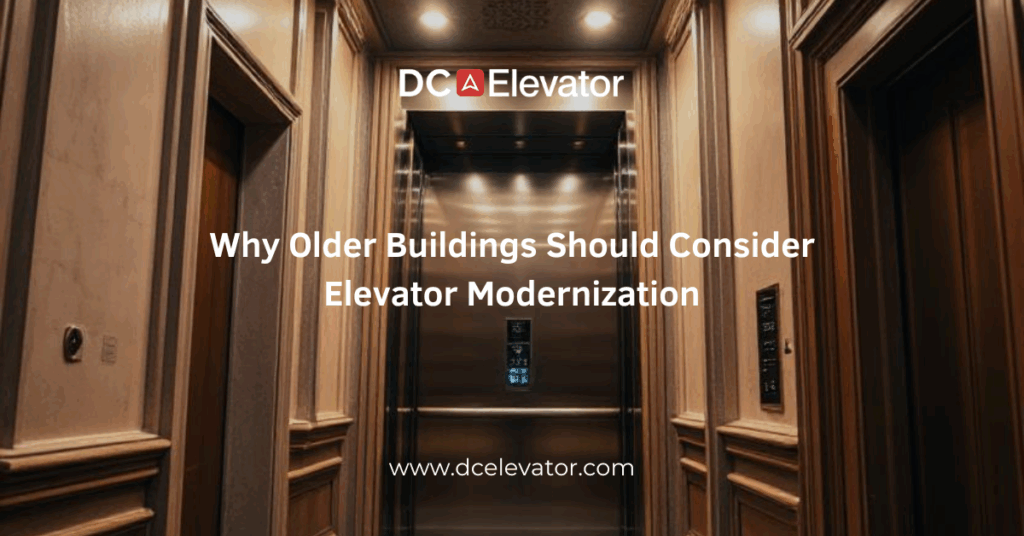Is your building’s elevator more than 20 years old? If so, you’re not alone—and you may be facing hidden costs, safety concerns, or tenant complaints that are all tied to outdated equipment. As buildings age, their elevator systems often lag behind in performance, safety features, and energy efficiency. Yet many property owners continue to repair rather than replace, thinking it’s the most cost-effective approach.
In truth, older buildings can benefit significantly from elevator modernization. It’s not just about aesthetics—it’s about safety, reliability, and protecting your investment. This blog explores why elevator modernization is particularly important for aging structures and what building decision-makers should consider.
The Cost of Aging Elevator Systems
Older elevators can become a drain on your budget. Frequent breakdowns, higher maintenance costs, and parts that are increasingly difficult to find all contribute to operational inefficiency. These issues are especially common in buildings built before the 1990s, when elevator systems used analog or relay-based technology now considered obsolete.
One real-world example: A mid-sized residential building in the Southeast spent nearly $20,000 on repair bills over three years, only to experience continued reliability issues. After a modernization project that included new control systems and energy-efficient motors, the building saw a 35% reduction in maintenance costs and improved tenant satisfaction.
Modernization Enhances Safety and Code Compliance
Safety codes evolve—and for good reason. Outdated elevators may lack features now required by modern standards, such as emergency communication systems, door sensors, or fire-service modes. While older buildings may be grandfathered into older codes, this doesn’t remove liability if an incident occurs.
Modernizing your elevator system can help align your building with current safety regulations, reduce legal risk, and give occupants greater peace of mind.
Improved Performance and Energy Efficiency
Slow, noisy, or unreliable elevators are more than just a nuisance—they can affect tenant retention and property value. Modern systems deliver smoother rides, quicker floor-to-floor travel, and quieter operation.
In addition, today’s elevators are more energy-efficient. By updating lighting, motors, and control systems, you can reduce energy consumption and lower operating costs—key benefits for buildings aiming to improve their environmental performance or meet green certification goals.
Extending the Life of Your Investment
Think of modernization as a strategic investment, not just a repair. While the upfront cost may seem higher, the return in reduced maintenance, improved performance, and extended equipment lifespan is often worth it.
Modernization doesn’t necessarily mean a full system replacement. Partial upgrades—like new door operators or updated control systems—can deliver significant benefits at a fraction of the cost.
Conclusion: A Smart Move for Aging Buildings
If your building is older and still relying on its original elevator systems, now is the time to consider the long-term benefits of modernization. From reducing costly breakdowns to improving energy efficiency and safety, elevator upgrades can revitalize your building’s core systems and protect your investment.
If you’re managing an aging property and considering your options, we can help. Our team provides tailored elevator analyses to help you determine the right modernization strategy for your building. Contact us today to get started.
